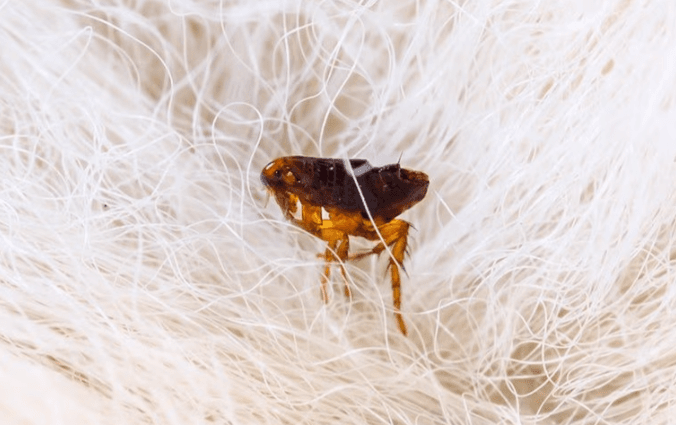
Why Are The Fleas In San Mateo So Difficult To Get Rid Of?
How To Identify Different Types Of Fleas

There are several different types of fleas in California, including cat fleas, dog fleas, sticktight fleas, and ground squirrel fleas. It can be difficult to differentiate flea species unless you're looking under a microscope. However, cat fleas are far more common on dogs and cats than any other species and are also the kind most often found in homes.
Fleas are about ? inch long and have small heads and laterally flattened bodies. They are typically brown but can take on a reddish hue due to the blood they consume. Fleas are wingless but have long hind legs that they use to jump great distances.
They also have backward-pointing bristles that enable them to quickly crawl through fur and hair. Fleas have piercing mouthparts that they use to draw blood from their hosts. Though small, fleas can be seen by the naked eye.
You may identify a flea problem when you notice your pets scratching or biting at their fur much more than usual. You may also spot the insects themselves, either on your pets or jumping around on your furniture or carpet. Flea feces, which looks like small dark specks, may be scattered on your rugs or pet beds. You may also notice pearly-white, oval-shaped flea eggs on your pet or around your home.
The Lifecycle Of The Common Flea
The lifecycle of a flea has four stages: egg, larva, pupa, and adult. Adult female fleas lay around 20 to 50 eggs per day. Flea eggs are very small, only 1/32 inch long, and are white and oval-shaped. Cat flea eggs are typically laid on the host but fall off as the animal moves throughout its environment, often ending up in its sleeping areas. The eggs hatch after two to five days, and larvae emerge.
Flea larvae look very different from adult fleas. They are hairy, wormlike, and have no legs or eyes. They eat dried blood and waste produced by adult fleas. After about eight to 15 days, the larvae create cocoons in which they pupate. The time it takes them to develop depends on the temperature, as they prefer conditions between 70 and 90 degrees. At room temperature, it takes approximately 18 days for adult fleas to emerge from the cocoons.
The adult cat fleas begin feeding on their host, generally surviving for around 30 or 40 days. During this time, they mate and reproduce, and the cycle continues.
Three Reasons Fleas Are So Hard To Get Rid Of
Fleas are one of the more difficult pests to eradicate for a variety of reasons. Here are the top three reasons it's hard to get rid of fleas in homes:
They reproduce rapidly - female fleas lay dozens of eggs each day.
Their long, complex life cycles - fleas can be resistant to treatment during some stages of their development.
They infest both pets and homes - both your pets and your home must be treated simultaneously for fleas, otherwise, the infestation will continue.
Due to these factors, flea infestations are extremely difficult to eliminate without the help of licensed pest control professionals. In the next section, we'll cover effective flea prevention and control methods.
Control, Extermination & Prevention Of Fleas
Fleas are challenging to get rid of once an infestation has taken root, but there are some practices you can implement to prevent fleas in the first place. Here are some simple ways to avoid flea problems in your home:
- Consistently medicate your pets for fleas.
- If your dog or cat has fleas, take them to the veterinarian for treatment.
- Keep your pets clean and groomed.
- Mow your lawn regularly and remove excess yard debris.
- Vacuum your home frequently.
- Deter wildlife, rodents, and stray animals on your property, as they may carry fleas.
These measures can help reduce the chances of a flea infestation from occurring. If fleas do become a problem, professional treatments from a San Mateo pest control company can eliminate them.
For flea control in San Mateo, reach out to the experts at Pacific Pest Management. Our technicians are trained and experienced in exterminating fleas and will deliver an effective solution with quality customer service. You deserve a flea-free home. Put an end to your flea problems with help from Pacific Pest Management. Give us a call today for your flea control estimate.

Our Reviews
Hear From Your Friends & Neighbors
At Pacific Pest Management, your satisfaction is our priority! See for yourself what our customers have to say about working with us.
-
"Customer for life"
Fantastic service! And Fast service! Customer for life and VERY reasonable rates.
Joyce W. -
"A+ service"
I needed a pest inspection. I made one call and everything else was seamless. Can't imagine anyone does it better!
Jesse B.


